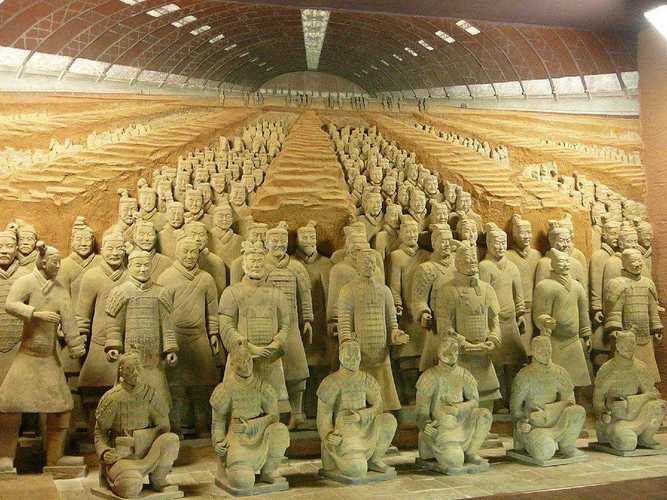
How Big is the Terracotta Army?
The Terracotta Army is one of the most impressive archaeological discoveries of all time, a testament to the power and ambition of China's first emperor, Qin Shi Huang. But just how big is this army of clay warriors?
A Legion of Thousands
The Terracotta Army was created in the third century BC to accompany Qin Shi Huang, the first emperor of a unified China, into the afterlife. The army is estimated to comprise around 7,000 life-size figures, each one unique and realistically detailed. These figures are not just simple foot soldiers – they include archers, charioteers, generals, and even cavalrymen, showcasing the military might of the Qin dynasty.
A City of Soldiers
The sheer scale of the Terracotta Army is staggering. The figures are arranged in battle formation across three main pits, covering a colossal area of over 20,000 square meters (approximately 5 acres). To put that in perspective, that’s about the size of three football fields!
Guardians of an Emperor
Located about 1.5 kilometers east of Emperor Qin Shi Huang’s mausoleum, the Terracotta Army pits were strategically positioned to protect the emperor in the afterlife. The mausoleum itself is an enormous complex, believed to contain unimaginable treasures and designed to mirror the emperor's earthly palace and the cosmos.
More Than Meets the Eye
While the life-size soldiers are the most famous aspect of the site, the pits also contain numerous bronze chariots and weapons, many still in remarkable condition. This incredible collection offers invaluable insight into the military technology, artistry, and cultural practices of ancient China.
FAQs
Q: How tall are the Terracotta Warriors?
A: The height of the Terracotta Warriors varies depending on their rank and role within the army. On average, they stand between 1.8 and 2 meters (5 feet 11 inches to 6 feet 7 inches) tall.
Q: How long did it take to build the Terracotta Army?
A: Construction of the Terracotta Army and the accompanying mausoleum complex is believed to have started around 246 BC when Qin Shi Huang ascended the throne, and continued for almost 40 years, involving hundreds of thousands of laborers.
Q: Why were the Terracotta Warriors painted?
A: The Terracotta Warriors were originally painted in vibrant colors, with details like clothing patterns, facial features, and weapons all meticulously colored. This paint, however, deteriorated quickly after excavation due to exposure to air.